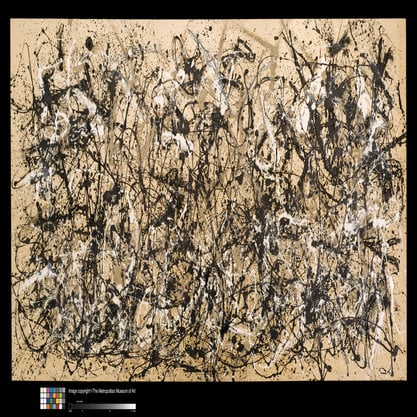Article
Hsiao Chin (Xiao Qin) [蕭勤] (1935--) By Seiz, Natalie
Article
Hsiao Chin is an abstract painter who was born in Shanghai, China, to an affluent Christian family. His father Hsiao Yu-mei [蕭友梅] founded the Shanghai Conservatory of Music in 1927. His parents died when he was young, and he moved to Taiwan where, in 1951, he entered the Department of Art Education at the Provincial Taipei Normal School. There he met his mentor Li Chung-sheng [李仲生] (1912–1984). In 1956 Hsiao became a founding member of the Ton Fan Art Group [東方畫會] (also known as the Dongfang huahui or Eastern Painting Group). Hsiao Chin had moved to Spain in 1955, by which time his painting was rich in calligraphic marks made in oil. He moved to Italy in 1958 and lived there for forty years, establishing the Punto movement in 1961 with painters Antonio Calderara (1903–1978), Azuma Kenjiro (1926--), and Li Yuan-chia [李元佳] (1929–1994).
Throughout his life, Hsiao investigated Taoism and metaphysics, Zen, the energy of the sun, Tibetan tantrism, and Indian mandalas, and represented this in his non-figurative works through pure bold colors. While in New York from 1967–1971, he was further influenced by the work of Mark Rothko. Hsiao also wrote for Taiwanese newspapers from abroad, communicating art news and trends directly to a Taiwanese audience.


